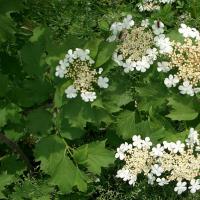Yellow-violet flowers. Indoor flowers with purple and red leaves: names, descriptions, care. Purple meadow plants
The color violet does not have an unambiguous description of its effect on humans due to its annual bipolarity. There is a certain tradition to consider it the most unusual for perception. Experts in the field of psychology, after conducting certain studies, came to the conclusion that each person reacts to it differently. Including color options for flower buds.
In some countries, the color purple is considered to be a mystical color, making it a symbol of the night, under whose auspices many inexplicable things happen. Some people compare it to the air, which has tropical notes in it. Intellectuals and those who are partial to secrets and travel love this color. But again, psychologists say that it is impossible to determine exactly what types of people are fans of this shade.
Those who love this color and gardening can try to enhance their flowerbed or garden plot by planting purple flowers.
What does the purple color of flowers mean?
In general, purple flowers mean that a person is admired, they also symbolize charm and friendship. Violet itself is a connecting color; it is capable of reconciling and connecting different people. Therefore, purple flowers will help different personalities find a common language. Purple is the favorite color of poets and royalty, which is why compositions made from flowers of this shade look so regal and unusual.
Purple flowers: names
There are many purple flowers in nature, and if you want them not to disappear from your flowerbed over a long period, then you can make a continuous flowering bed out of them.
- Crocus. The bulbous plant, quite common, begins to bloom in early spring. Many varieties of this crop have purple flowers. If you plant several at once on one plot, you will get a very unusual and beautiful combination. By the way, all varieties of crocus develop well and grow both in the shade and in sunny areas. They will take root in any soil without stagnant moisture and do not require special care. They are not afraid of frost and snow, but their flowers open only in sunny weather, and vice versa in cloudy weather: they close their petals tightly. They can grow in one place for up to 5 years, after which it is recommended to transplant them to a new place of growth. They will look great among lawns and stones. They are also also used for winter forcing;

- Hyacinths - they are called the kings of spring! Translated from Greek, their name translates as “flower of rains,” which is probably due to the rainy period in the place of its origin. These plants themselves are beautiful, strong, at the same time delicate and very beautiful, they also have a very pleasant smell and a variety of purple shades;
- Tulips. There may not be many varieties of this plant with purple flowers, but they look very impressive. The flowers themselves are large, often with a white edge;

- Rhododendron. It is an evergreen shrub that loves sun. There are not so many varieties of this shade, but they look very beautiful and bloom for a long time. It is used for both single and group landings;
- Lilac. She has a lot of fans. This plant got its name thanks to the purple hue of its flowers!;

- Delphiniums and lupins. The first ones have semi-double flowers of a dark color. The flowers of the 2nd plant are also unusual and very beautiful;
- Irises. They don't have any colors! They are considered the leaders among purple flowers. The coloring of some of their varieties is very unusual and immediately attracts the eye, as does the shape of the flowers themselves;

- Decorative bow. Its flowers are collected in graceful inflorescences. It can become a decoration for anyone garden plot;
- Salvias, aquilegias, Wittrock violets, campanulas, phloxes and aconites begin to bloom in mid-summer;

- Purple mackerel and purple hazel also begin to unfurl their beautiful leaves in the summer;
- Rose. Although this shade is not very characteristic of roses, nevertheless, varieties of this color exist in nature;

- Bedleya Davida or "Black Knight" is an interesting exotic plant. It blooms thickly, long and majestically. The inflorescences are velvety, consisting of small flowers. Their aroma is similar to that of honey, which is why they attract butterflies so strongly. It grows very quickly. Bushes can be planted either singly or in groups;
- Cat mint. It blooms with small tubular flowers of a light shade. They exude a very pleasant aroma and bloom for a long time. If faded inflorescences are removed in time, flowering will recur;
- Lilies. There are some hybrids that grow quickly and have beautiful appearance, and their flowers sometimes reach a diameter of 20 cm!;
- Gladioli. Hybrid varieties can bloom with buds that are colored in several shades at once;
- Clematis. A climbing plant that blooms luxuriantly and has recently become increasingly popular among gardeners;
- Wisteria grandiflora "Multiuga". This plant is a vigorous growing vine. It blooms long and beautifully. Flowers reaching a length of 30-50 cm are collected in inflorescences. The shrub itself is perennial, and sometimes reaches 18 m in height, the leaves are up to 30 cm long. It blooms in early spring, and in the southern regions - in May;
- Asters. Very common flowers, begin to bloom in the 2nd half of summer.
Selection of photos



Flower with purple leaves: description
Not all lovers of purple flowers have the opportunity to grow them in their garden, but this can be done in an apartment! There is a houseplant that has purple leaves. At first glance it may seem that this is a very rare species, but in fact this is not the case at all. Purple sorrel or oxalis has these qualities. It can be grown not only inside the house, but also in garden plots. It attracts attention with its leaves, which are painted in a rich purple color.
The flowers of this plant are inconspicuous and small and look very delicate against the background of bright foliage. They can be yellow, white or pink. Oxalis blooms for a long time, and 3-4 flowers bloom at the same time, and then, as they fade, they are replaced by new ones.
In many countries around the world, this plant is considered a symbol that brings happiness to the home. It was even popularly nicknamed the “clover of happiness” and is given as a gift in decorative pots for Christmas. New Year. There is such a sign: if on the last day of the outgoing year the wood sorrel changes its owner, then it will definitely bring happiness to the house.
Its leaves look like the wings of a butterfly and can fold if the lighting changes. And the main feature of the sorrel is that it closes the leaves in cloudy weather or at night, and in sunny weather, on the contrary, it opens them to the rays of the sun. Because of this, the place where oxalis grows must be chosen carefully. It should be such that the plant does not burn from the sun's rays, but at the same time it should not be in semi-darkness.

Also, the place should be cool, with diffused light. Regular watering is recommended. In nature, it grows in damp places on the banks of ponds and swamps, as well as in the shade of massive trees. Due to prolonged darkness, oxalis will lose decorative look leaves, and bright light will simply burn them.
In general, this plant is unpretentious in terms of care. But there are some varieties that require a dormant period, which often occurs in winter. The above-ground part of the plant dies off for 1-1.5 months, and in the spring new shoots appear. During the rest period, the air temperature in the room should be approximately 12 degrees Celsius, but it is not always possible to maintain it. Due to failure to comply with this condition, sorrel often does not grow for many gardeners.
In summer, oxalis needs regular watering, but without stagnation of water. In autumn, watering should be reduced, and in winter, stopped altogether, keeping the soil slightly moist. In dry weather, the leaves can be sprayed, but it is better to do this with boiled, settled water so that later there are no streaks left on the leaves.
The main advantage of this plant is its resistance to pests. And among the diseases it only exposes to rotting of the root system due to excess moisture.
The effect of the color violet on humans cannot be called unambiguous. It is unusual for perception, so each person has his own reaction to this color. Purple is the color of mysticism and night. It is preferred by intellectuals and travelers. In a flower bed or among flowers in the garden, plants with flowers in purple shades look very impressive. They are found both among perennials and annuals. Some of these flowers are not only beautiful, but can also be used as medicinal raw materials.
Magnificent asters
Among the many varieties of these flowers there are both annuals and perennials. Asters have flowers in lilac, purple, blue, red, orange and white. Below are those varieties in which purple or lilac shades predominate:
Clematis hedge
Autumn-blooming crocuses are planted in late July, and spring crocuses in the fall. It is necessary to take into account that crocuses grow quickly, so the distance from one bulb to another should be significant - about 10 cm. After flowering, the bulbs must be dug up and stored in a dry place until the start of the next season.
Delphinium and muscari
The soil for planting these flowers should be slightly acidic and slightly moist. It blooms well both in sunny places and in the shade. Soil fertility affects the size of the bulbs and the appearance of the flowers. Mouse hyacinth should be fertilized with compost or humus.
Master Nature, skillfully playing with various colors and shades, creates incredibly beautiful compositions that you want to repeat in your own garden. When creating a future pictorial masterpiece, the main bet can be placed on the color violet, which conveys emotionality, great sensitivity, high spirituality and is optimal for meditation and contemplation.
This “cold” color is ideal for dreamy people who carry their fantasies far beyond the limits of the possible; this favorite color of intellectuals and harmoniously developed people has a positive effect on brain activity.
Purple color: meaning
The color purple, located in the color palette between red and blue, is associated with mysticism in various countries. It is considered a symbol of the night, which hides many secrets and mysteries under the cover of stars. Purple flowers planted in garden beds look rich and rich; admiring them brings peace, tranquility and pleasure. In nature there is a fairly wide range of flowers with purple colors, so choosing plants that will harmoniously replace each other throughout the season and harmoniously color the garden with purple colors is not difficult.
Everyone's favorite lilac
First of all, when you mention purple, a gorgeous bush of fragrant lilac appears in your thoughts - the primary crop of all parks and gardens, characterized by colorful large inflorescences and speaking of the arrival of spring with its warm days.
The Twilight lilac variety will decorate any garden with purple-violet buds on tall bushes (about 4 meters), dark green leaves and a sparse spreading crown. The heady strong aroma will enchant you on spring evenings, and the luxurious flowering will delight you for about 3 weeks. Lilac varieties such as “Danton”, “Maksimovich”, “Mulatto”, “Lady Lindsay”, “President Poincaré”, “Charles Joly”, “Raj Kapoor” will decorate any garden because they have gorgeous purple flowers.

The photo conveys all the beauty of these gorgeous shrubs, loved by many gardeners.
Crocuses - the purple charm of spring
Beautiful crocuses, whose goblet-shaped flowers “scream” about the arrival of the long-awaited spring, will speed up the passing of winter with splashes of purple paint against the background of melting snow. Reproduction of such beauty is not particularly difficult and consists of separating the children from the mother plant, which in a year will delight with the first flowering. To create an original composition, purple flowers are recommended, the names of which are given below:

You can dilute a monogamous landscape with the colors of the sun using the Violet Queen variety, whose yellow-violet flowers will add freshness, brightness and contrast to the composition.
Irises are the decorative basis of any flower garden
Fading crocuses can quite harmoniously replace everyone's favorite and widely cultivated irises (otherwise known as iridodictium reticulum). This flower has a large number of varieties, which are enough to create a chic flower garden exclusively from irises. The noble plant is characterized by the graceful shape of large flowers, consisting of three (sometimes six) petal perianth lobes. The internal and external lobes of the crop, which blooms in May-June, are different in shape, color and size. The sword-shaped iris, which has a beautiful purple flower and is characterized by late flowering, stands out for its original beauty. It is also called Japanese iris, since it was in Japan that most varieties of bearded irises were bred. The Socerez Triumph variety has an unusual color: almost blue petals, as if shrouded in a purple web, on top of which the careless artist applied more strokes of yellow.

The following varieties diversify the flower garden with purple colors:
- Russian iris, characterized by medium-sized fragrant flowers. This variety is low-growing and suitable for growing on rocky areas.
- Siberian iris. The height of a fairly hardy flower is approximately 1 meter. Narrow-linear light green leaves and the absence of a beard on the outer perianth lobes are the main characteristics of this species.
- Winners Sackl. Characterized by abundant annual flowering, this variety stands out from the rest with dark purple flowers (photo) with a white spot under a blue beard.
- Merion Maid is a solid light blue variety with some hint of purple and a bright yellow beard. Its large flowers look original both in a flower bed and in a bouquet.
Hyacinth is an indispensable component of the purple palette
When it comes to flowers that add a splash of color to garden beds, it is worth mentioning purple flowers, whose names translated from Greek mean “flowers of rain.” These are hyacinths. Strong, luxurious, dense inflorescences captivate with their pleasant aroma, delicate beauty and rich color palette, in which the color purple is effectively represented.

These are varieties such as “Blue Jacket” and “Ostara”, which have a blue-violet color; “Peter Stuycent” is characterized by a blue-lilac hue; "Woodstock" and "Maria" are dark purple varieties, "Bismarck" is a light purple flower, and "Miss Saigon" is a purple-red flower.
This unusual purple tulip
Tulips continue the purple wave of flowering, in particular varieties such as 'Traveler', with its beautiful rich purple hue, 'Chanson', characterized by dark blue-violet goblet flowers edged with a white contrasting border. The “Alibi” variety, characterized by a light purple color, and the dark violet, almost black with white edging, “Jackpot”. The lily-purple flower “Burgundy” and the purple variety “Ballad” with a white border will stand out for their original color in a well-arranged flower arrangement. "Porple Dream" diversifies this purple collage by adding a red tint.

Decorative onions bloom with purple flowers, various varieties of which can be used as a worthy decoration for any flower bed. These are Aflatun onion, Karatav onion, giant onion, Christoph onion.
Purple gladioli in the garden
Gladioli are the decoration of any flower bed. Purple flowers have varieties such as “Joseph Gyulot”, “Peregrina blue-violet”, “True Bru”, “Blauer Triumphant”, “Bl. Admiral", "Vaichenblau", "Othello". The “Aida” variety stands out with dark purple flowers and red inside. Violet-blue flowers of the Blyau Shengayt variety add variety to any flower arrangement. The “Pearl Flora” variety has rich dark purple flowers, which will look very harmonious next to the “Belladonna” variety, whose pink-lilac flowers will only decorate the composition.
Clematis - the basis of a vertical composition
An indispensable attribute of a vertical garden are climbing plants, many of which boast purple flowers. Violet clematis and Jacquemin's clematis are characterized by abundant flowering. Such a purple hedge with light stripes that border clematis flowers will brightly decorate the garden, bringing it to life to the fullest. Clematis variety "Luther Burbank", planted with outside garden composition and blooming with large purple flowers, will catch the admiring glance of more than one passerby.

The variety “Minister”, whose flowers are also decorated with a purple-violet stripe, can add a blue tint to the purple composition.
Wisteria - purple beauty
One of the key components for vertical gardening is wisteria - a perennial plant that brings true joy to connoisseurs of beauty with its beauty. Growing up to 18 meters in height, the flower is characterized by drooping vine branches and leaves up to 30 cm long. The purple representative, the “Multiyuga” variety, is distinguished by large flowers collected in large inflorescences up to 30-50 cm in length, and is characterized by strong growth and bright flowering.
Oxalis - an indoor miracle
Indoor compositions can be “violet” by a plant such as wood sorrel, called “clover of happiness” in Europe. According to legends, it attracts good luck to the house in which it grows. In this case, the following condition must be met: the wood sorrel must change its owner on the last day of the outgoing year. Therefore, on New Year's Eve, this plant with purple leaves is considered the best gift. It is the oxalis trefoil, symbolizing the Holy Trinity, that is the national symbol of Ireland, depicted on its coat of arms.

A characteristic feature of this unusual indoor plant is the folding and lowering of its leaves at nightfall or in cloudy weather. At the same time, it seems that the flower with purple leaves has turned into a flock of butterflies; This is why wood sorrel is also called “Madame Butterfly” and “butterfly flower”.
Zebrina is a houseplant characterized by oval leaves with a shiny surface, multi-colored at the top and purple underneath.
The violet-white flowers of the common violet will decorate any room in which it grows. This fabulously beautiful plant delights with its variety of shapes and shades. Violet is used for indoor growing. She also feels great in open ground, she is especially comfortable in the shade of trees.
Purple flowers are found in many garden plants such as hyacinths, violets, petunias or lavender. A garden in purple color looks unusual, original, magical, mysterious. Today, every gardener can afford to turn his plot into a “purple fairy tale.” Purple plants of different varieties and types planted nearby will create an incredible composition in your garden. So, which purple garden flowers are considered the most beautiful?
Names of purple flowers for the garden
1. Wittrock violet (garden pansy)
This plant is one of the most popular among garden crops. Violets are also very popular as indoor and balcony flowers. Violet is a biennial plant. Flowering begins in the fall (in the year of planting), but the peak flowering of pansies occurs in March-April of the year following sowing.


2. Hyacinth
Hyacinth flowers have a strong aroma. To date, about a hundred varieties of this ornamental plant have been bred, but hyacinths in blue and purple shades are more popular. These flowers can grow in one place for up to 4 years. If you love purple spring flowers, this is a bulbous plant that is planted in the fall and is one of the first to bloom in the garden in the spring.
3. Veronica
The plant has a thin elongated stem and corrugated leaves. Its flowers are collected in narrow inflorescences. These purple flowers grow best in sunny, dry locations. They like easily permeable soil.
4. Passion flower (Passiflora)
This is a perennial creeping plant that forms woody shoots and sticky tendrils, with the help of which it curls around the plants. It has large decorative flowers with spectacularly arranged stamens. The plant needs fertile, easily permeable and slightly acidic soil.
7. Tall larkspur (delphinium)
Usually the plant is planted in groups of several plants. Often found in garden plots in rural areas. Delphinium loves lightly moist soil as well as sunlight.
8. Lavender
Lavender flowers are used both as an ornamental plant and as medicinal herbs. Purple lavender flowers have a strong aroma. July-August is the flowering period of this unusual plant. Lavender is drought tolerant and loves warmth and sunlight. If you want to grow lavender in central Russia, then for the winter you will need to dig it up and put it in the house. This plant cannot tolerate severe frosts in the soil.
9. Italian volovik
Italian oxwort attracts attention primarily due to its large beautiful flowers dark blue hue. Outwardly it resembles a forget-me-not. Its large leaves are of no less decorative value. Grows well in various soil types and tolerates drought well.
10. Lupine multifolia “Gallery Blue”
The plant has an elongated inflorescence of unusual decorative form. The flowering period occurs in June. Sometimes it blooms again in the fall. Lupine needs fertile soil in an acidic environment, as well as sunlight. Not all lupins are purple; take a close look at the type of plant you will plant in the garden.
11. Siberian iris
This plant is a protected species and has delicate blue-violet flowers. For many years, iris can grow in the same place. The best condition for it is the presence of fertile, moist soil; the plant tolerates prolonged heavy rains. Siberian iris does not tolerate drought and heat.



12. Catchment (aquilegia)
This is a beautiful plant, looks interesting in perennial flower beds, and has straight upright stems. Unfortunately, the catchment is short-lived, but produces a lot of seeds, making it easy and quick to reproduce. Aquilegia prefers to grow in soil with a lot of humus.
In a flowerbed, you can create a monochrome composition by planting several types of purple flowers. Or dilute them with white and yellow flowers. When creating a flowerbed in purple tones, pay attention to the height of the plant. The center of the composition in the flowerbed may be something tall, and then plant lower flowers in a circle.
Tall purple flowers:
- delphinium,
- aquilegia.
Medium height:
- iris,
- lupine,
- lavender.
European countries are in a fever from purple tones in flowers. The magical charm of color is determined by a combination of opposing energies: the restraint of blue and the assertiveness of red. To keep up with the fashion in landscape design, the dacha is populated with purple plants.
Description of purple perennial crops
Violet flowers have 190 tones, so choosing candidates for home and garden decor is easy. Among indoor plants They prefer the beautiful fuchsia, violet, and sorrel, which is popularly called the clover of happiness. The violet scent and color have many followers.
Violet colors are amazingperennials in the garden:
- Italian oxwort and gentian;
- hydrangea and arizema;
- aconite and callistephus;
- geranium and pulmonaria.
Psychologists are convinced that each person has their own reaction to the purple hue. The color of the flower buds symbolizes well-being, spiritual wealth, and kindness. A birthday is a reason to give your best friend a homemade flower with purple buds.
Some gardeners believe that purple coloration reflects the age and wisdom that comes with time. Petunias with purple flowers have a richer scent compared to other varieties. The luxury and depth of double or simple tubular buds is achieved thanks to the floral tone.
In addition to serenity, among the meanings of purple cultures are sadness and longing for the past. Purple flowers are appropriate for romantic people who dream of the future and the new. Girls who are depressed are not advised to grow such flowers.
For a delicate garden, a combination of purple perennials along with annuals is just right. The vicinity of orange or yellow crops adds cheerfulness to the flower garden.
The plantings look beautiful in a group of white and purple irises. Callas and gladioli are attractive in this arrangement.
To decorate a flowerbed with dark shades, purple crops with red and pink flowers are planted. Soloing purple buds against the background of ground cover purslane or another crop will emphasize the originality of the site.
TOP 10 purple perennials
Plants are used for cutting into bouquets, to decorate buildings and to create a charming layout. Dwarf and tall varieties with numerous buds are grown. Summer residents are interested in the names of the best purple flowers for the garden.
Alyssum
Cultivated as an annual and biennial. The growth of the low-growing bush ranges from 20 to 40 cm. Alyssum has fragrant flowers and bright colors.
Features of agricultural technology
The light-loving plant loves light, fertile soil. On initial stage For development, the perennial needs moderate watering and increased nutrition. Alyssum, which belongs to the Brassica family, is affected by the cruciferous flea beetle.
If plants are very sick, chemicals are used:
- Aktar;
- Fitoverm;
- Actellik.
Asters
The flower dominates the garden in autumn. The favorite of the autumn site is characterized by intense flowering before the onset of frost.
The color scheme is distinguished by a variety of tones: yellow-violet, snow-white, lilac, hot pink. New Belgian aster is a valuable honey plant, the golden center of which bees flock to when flowering.
Features of agricultural technology
When planting asters, you need:
- semi-shaded or sunlit flower bed;
- light, breathable soil;
- adding organic matter and mineral fertilizers;
- moderate watering;
- replanting by dividing the bush every 5 years.
Colchicum
The perennial resembles a crocus. The name of the purple flower is Colchicum. Commonly called autumn crocus or autumn crocus. The differences lie in the size of the flowers and the smell. One bulb produces up to four flowers.
Flowering period is three weeks. Then the pollinated flowers immediately dry out and overwinter well under the snow.
Colchicums are planted in the rock garden. Flower beds with constant flowering, as well as ordinary flower beds, are suitable.
Features of agricultural technology
Colchicum grows in sun and shade.
However you will need:
- soil moisture level control;
- moderate watering during hot weather;
- weeding and weed removal;
- trimming dried leaves in June and after flowering.
Colchicum
Hyacinths
They admire the beauty and richness of colors. The elegant purple flower is mentioned in legends. One of them says that a young man named Hyacinth, the favorite of the Greek god Apollo, was wounded during a competition. In the places where transparent drops of blood flowed, wildflowers appeared, which were named after the young man.
Perennials are excellently cultivated in open ground and at home.
Features of agricultural technology
Spring primroses are susceptible to fertilizing. Dry fertilizer is applied after the first shoots have formed, and the soil is also loosened for the first time.
Next time, feed the flowers at the budding stage at the root. Then liquid replenishment is applied after flowering.
Before rooting the bulbs, the soil is not allowed to dry out. Hyacinth is watered periodically, especially during drought.
Hyacinths
Creeping tenacious
A distinctive feature of the ground cover is its ability to survive. In nature it is found in meadows and forests.
The following varieties are popular among summer residents:
- Multicolor with striking purple foliage interspersed with scarlet, yellow or orange;
- Tenacious Laxmanas with elongated leaves of a grayish color;
- Geneva tenacious with flowers of white, bluish or pink color.
Features of agricultural technology
The survivor is resistant to the adverse effects of weather. The plant is not subject to attacks by pests and phytodiseases. Vitality blooms at a minimum sunlight. Prefers loose types of soil with the addition of sand, peat or turf.
On a note. They diligently plan the planting of survivors due to the rapid spreading and suppression of plants growing nearby.
Creeping tenacious
Clematis
In other words, vine, or clematis, is a herbaceous perennial plant from the Ranunculaceae family. Grows in temperate climates and subtropics. There are up to 300 species.
On a note. Ideal for vertical gardening. Clematis is used to decorate terraces and gazebos and is planted together with roses.
Features of agricultural technology
Heat-loving clematis likes loams and sandstones without nearby groundwater. Plants are planted at intervals of 2 m.
Caring for the vine consists of watering, feeding, and mulching the ground under the bushes: clematis does not tolerate overheating of the root system. In winter, shelter is needed.
Muscari
The undemanding plant has become famous for its color and smell, which is similar to musk.
Interesting. An impressive example of landscape planting of mouse hyacinth is the famous white and blue muscari rivers in Holland in Keukenhof Park.
Features of agricultural technology
The plant, which has a 25 cm stem, likes plenty of watering and sunlight. Grows in partial shade. Propagation of individual varieties of small crops occurs by self-sowing.
Phloxes
The inhabitants of decorative flower beds take root and grow even on heavy soil. The addition of coarse sand to planting holes is appreciated.
Features of agricultural technology
To make phlox delight with balls of bright colors, planting is done in an open, sunny flower bed protected from the winds. The root collar of the plant is buried 2-3 cm. Sandstones need an admixture of clay.
Lilac
Planting ornamental crops will improve the garden and city streets. Lilac (in Hebrew - lilah, in Persia - fox tail, in Rus' - chenille) delights summer residents with lilac flowers and an amazing aroma from mid-May. The variety of lilac determines the color of the flowers: from pink-violet to white. There are 3 species growing in Russia, and 30 in Eurasia.
Features of agricultural technology
For planting bushes, choose fertile, drained soil. Crops are planted at intervals of several meters, watered and mulched. In the first years after planting, no fertilizer is applied to the bushes. Next, they are fed with ammonium nitrate and urea. Don't forget about pruning the plant.
On a note. Fresh lilac leaves heal purulent ulcers and wounds.
Buddleya
It belongs to deciduous shrubs that reach 2-3 m in height and are distinguished by long spike-shaped inflorescences.
Features of agricultural technology
Buddleia loves sunny areas. The water-loving crop prefers foliar spraying. The bush blooms at the age of three. The peak of decorativeness falls in July and lasts until October, if faded inflorescences are removed. Before flowering, feed with nitrogen and organic matter. In the flowering phase, fertilize with potassium and phosphorus. IN winter period culture needs protection.
The perception of purple garden flowers allows you to find peace of mind and replenish energy.
It is important for gardeners to avoid mistakes when choosing purple perennials.
 Are there mites in Pitsunda? Ticks in Abkhazia. Pitsunda pine grove
Are there mites in Pitsunda? Ticks in Abkhazia. Pitsunda pine grove Red viburnum (Viburnum opulus L
Red viburnum (Viburnum opulus L Nail Making Business How to Make Copper Nails
Nail Making Business How to Make Copper Nails Stone brazier: material features and manufacturing options
Stone brazier: material features and manufacturing options Blackroot medicinal cultivation
Blackroot medicinal cultivation Fuel cells: a glimpse into the future
Fuel cells: a glimpse into the future Houses with a hipped roof projects
Houses with a hipped roof projects